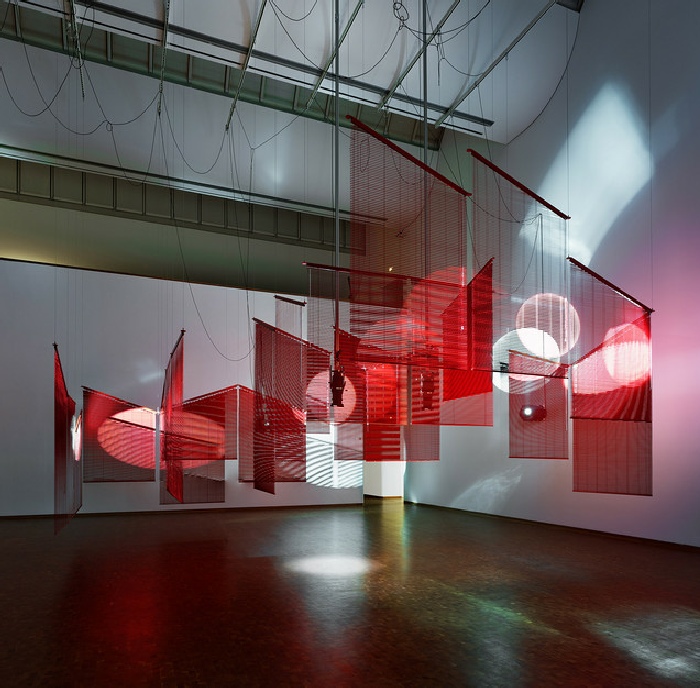Press Release
In 2018, the Gesellschaft für Moderne Kunst am Museum Ludwig will recognize Haegue Yang for her extraordinary body of work with the Wolfgang Hahn Prize. The Museum Ludwig will showcase the remarkable versatility of her entire oeuvre in the artist’s first-

Haegue Yang, ETA 1994-2018
Museum Ludwig, Cologne (Germany)
18.04 - 12.08.2018


© ArtCatalyse International / Marika Prévosto 2018. All Rights Reserved
Exhibition 18 April -

Haegue Yang, Mountains of Encounter, 2008, Aluminum venetian blinds, powder-
In 2018, the Gesellschaft für Moderne Kunst am Museum Ludwig will recognize Haegue Yang for her extraordinary body of work with the Wolfgang Hahn Prize. The Museum Ludwig will showcase the remarkable versatility of her entire oeuvre in the artist’s first-
The abbreviation ETA stands for “estimated time of arrival,” among other things. Thus, the exhibition title points to an artistic career in transit and the constant itineracy of an artist who maintains studios in Seoul and Berlin and has exhibited internationally since 1994.
The exhibition will begin with Yang’s first venetian blind installation from her 2006 Series of Vulnerable Arrangements—the 2006 Version Utrecht, an immersive and sensorial experience unfolding from a composition of various materials and the simultaneous use of wind, scents, light, and heat. Within this arrangement, video essays document the artist’s travels through cities around the world and convey feelings of home, isolation, and dislocation associated with her itineracy in quite personal commentaries.
One of the first rooms will feature early and in some cases reconstructed works that reveal Yang’s examination of Western art history from Duchamp to Fluxus and tendencies of Institutional Critique as well as the then-
A central part of the exhibition is Storage Piece. This key work was created in 2004 out of financial need and an acute lack of space as a collection of packaged works on shipping pallets. The work has since been exhibited in several configurations, and its arrangement will also change at regular intervals in the Cologne exhibition—a reflection of Yang’s consideration of transitory states. Furthermore, it was an important contribution to Conceptual Art in the mid-
Yang’s well-
Yang will also continue her series "VIP's Union" (2001–) with a version for Cologne. Well-
The 12-
With her diverse oeuvre, Yang adeptly avoids clear attributions. Her works demonstrate elements of Institutional Critique and are conceptual as well as rich in cultural and historical references, while simultaneously sensually complex and emotionally charged. Across over 1500 square meters of exhibition space, this comprehensive retrospective’s spatial scenography will echo the conceptual dynamics of the works, lending the exhibition the quality of a Gesamtkunstwerk—harmonious yet full of dissonances.
Curator: Yilmaz Dziewior
Curatorial Project Management: Leonie Radine